- Age 12~Age 90
- 1~2 hours
- 10:00 / 13:00
Experience authentic samurai culture under the supervision of Machii Isao, the world's best iaido master who uses iaido slashes with 6mm BB bullets flying at high speed. This is a valuable experience where you can learn about the etiquette and history of ancient samurai while wearing a large armor and feeling like a Kamakura samurai in the grounds of the 1,000-year-old history and venerable Tada Shrine. Under the guidance of Machii Isao, you can learn the etiquette of a true samurai and enjoy a memorable time while experiencing samurai culture.
20歳のアメリカ人男性をお連れしての甲冑体験。世界的に著名な町井先生に直接お会いできるとは思いませんでした。単にコスチュームを楽しむということではなく、着衣の順番や所作に至るまで、一つ一つの意義や歴史的な背景を、わかりやすく、楽しく説明してくださいました。インバウンドでリアルな日本を求める外国の方が増える中、本物に触れるチャンスがこんなところにあったとは。間違いなく次回もお願いしたいです。写真、ビデオばかりか心にも残る体験でした。
- Age 12~Age 90
- Over 6 hours on the day
- 09:00
This is a full-scale one-day training in traditional Japanese martial arts by Isao Machii, the world's best iaido master who has appeared in various media outlets and is known for his iaido technique of cutting 6mm BB bullets flying at high speed. In this experience, you will learn the structure of a sword, how to use it correctly, and deep knowledge about samurai and Japanese swords, and you will be able to master all kinds of traditional Japanese martial arts, including swordsmanship and body techniques. The martial arts you learn under Isao Machii's guidance are different from traditional martial arts that have become mere formalities. In authentic traditional Japanese martial arts, you will learn the techniques to skillfully apply the opponent's strength and toy with your opponent with slight movements. These practical techniques can be applied in everyday life and are sure to greatly change your worldview. Dress in training clothes, dispel the misunderstandings you have about samurai culture and Japanese swords, and experience true samurai culture. This will be a great opportunity for those who are looking for the real thing. ~ Flow of one-day training ~ 8:40 Meet at Nose Electric Railway's "Tada Station" and move to Tada Shrine by free shuttle. 8:50 Arrive at Tada Shrine. Move to the Mandokoroden. 9:10 After changing clothes, you will receive a prayer, and then the first half of the practice will begin. 12:00 Lunch break (enjoy a luxurious banquet meal) 13:00 Second half of the practice begins 16:00 Practice ends. After changing clothes, you will disband. This experience is a full-fledged one-day training in traditional Japanese martial arts for advanced practitioners of Iai, Kenjutsu, Aikido, etc., both in Japan and abroad, but beginners are also welcome to participate. Beginners will be carefully taught from the basics, and experienced practitioners will be provided with deeper skills and understanding. The instruction will be provided by the Guinness World Record-holding modern samurai, Isao Machii himself, and his top disciples. This plan, supervised by Isao Machii, will not only teach you the kata, but also teach you samurai martial arts that can be used in real combat. Rather than focusing on the kata, the focus is on how to actually use your body and move efficiently without exerting force. This is a rare opportunity to experience authentic samurai techniques and learn truly useful martial arts. After this experience, you will have a deeper understanding of the essence of the samurai who uses a Japanese sword, and you will be able to start on the path of martial arts with confidence. *Due to the guidance of the Agency for Cultural Affairs and the National Police Agency, this plan does not provide sword-cutting instruction to anyone other than disciples.
- Age 0~Age 100
- Within 1 hour
- 10:30 / 11:00 / 11:30 / 12:00 / 12:30 / 13:00 / 13:30 / 14:00 / 14:30 / 15:00 / 15:30 / 16:00 / 16:30 / 17:00
[Men only] Change to a cool yukata, why not take a stroll through Kinosaki Onsen? Because it can be rented from 10:30 to the longest 22 o'clock, it is recommended also for those who want to enjoy Yukata one day! In our shop you can choose from 200 kinds of Yukata.
- Age 0~Age 100
- Within 1 hour
城崎温泉を浴衣で散策しませんか? お気に入りのゆかたをお持込頂き、着付けができるプランです。 足りない和装小物はレンタルも可能です。
- Age 0~Age 100
- Within 1 hour
- 10:30 / 11:00 / 11:30 / 12:00 / 12:30 / 13:00 / 13:30 / 14:00 / 14:30 / 15:00 / 15:30 / 16:00 / 16:30 / 17:00
Why do not you take a walk in Yukata at Kinosaki Onsen? Because it can be rented from 10:30 to the longest 22 o'clock, it is recommended also for those who want to enjoy Yukata one day! In our shop you can choose from 200 kinds of Yukata.
カップルで旅行に行っていたのですが、凄く素敵な思い出ができました!予約して良かったです! スタッフの方もすごく話しやすくて、お揃い風にして頂きました! 機会があればまた行きたいと思います!????♀️✨
- Age 10~Age 100
- 4~5 hours
First, you will observe the making of a Japanese sword (forging) for about an hour. After that, you will create a small knife under the guidance of a swordsmith who has inherited the art of making Japanese swords. The "Small Knife Making Experience" has been running for over 10 years. During that time, hundreds of people have tried it, and we have improved it to give you a better experience of blacksmithing. Everyone is worried, thinking "It looks difficult" or "Can I do it?" but don't worry. I'll be there with you. I'll fully support you! Experience the excitement of seeing your first small knife completed!
- Age 0~Age 100
- 1~2 hours
- 09:00 / 10:00 / 11:00 / 13:00 / 14:00 / 15:00 / 16:00
Awaji tiles have been around for 400 years since the Edo period. As one of the three major tile production areas in Japan, tiles are still being manufactured there. The craftsmen who make onigawara and decorative tiles by hand are called "onishi", and it is a valuable experience to be able to see the craftsmanship of the onishi, who know the soil. Awaji tiles have been around for 400 years since the Edo period. As one of the three major tile production areas in Japan, tiles are still being manufactured there. The craftsmen who make onigawara and decorative tiles by hand, which are indispensable for temples and shrines, are called "onishi", and their numbers are decreasing, with only about 10 on the entire island of Awaji (about 50 nationwide). Tatsumi Co., Ltd., which you will visit on this plan, has five onigawara. The factory tour is a private plan limited to one group per time. With the guidance of the potter's president, Okitsu Yusuke, you will observe the tile manufacturing process and the techniques used by the onigawara craftsmen to make the onigawara tiles. You will also be able to talk to the onigawara craftsmen, who will be happy to answer any questions you may have. Afterwards, in the exhibition area, valuable pieces made during the Azuchi-Momoyama period are on display, giving you a glimpse into the evolution of this traditional craft that has continued for 400 years. Another attraction is that all the onigawara craftsmen's works from the Azuchi-Momoyama period to the present day are on display in one place. After the experience, you will be given a souvenir aromatic tile to choose from and can take home with you. Below is the experience schedule. You will be guided through the tour as follows: 1. Manufacturing site 2. Onigawara craftsmen at work 3. Onigawara collection (exhibition area)
- Age 0~Age 99
- Over 6 hours on the day
- 09:00
1. The first step of the Himeji Castle tour is a visit to Himeji Castle, which is registered as a World Heritage Site. Himeji Castle is a famous castle that represents Japan, and you can experience its beautiful appearance and historical background. You can enjoy the wonderful scenery while touring the castle and learning about Japanese history and culture. 2. Village scenery and shrine tour We will move to an area where old-fashioned rural scenery spreads, about an hour's drive from Himeji Castle. Here, you can see traditional Japanese scenery. You can relax in a quiet environment while feeling the original scenery of Japan. 3. Low birth rate and aging population and regional revitalization This region is facing a low birth rate and aging population, and the local elementary school is facing the threat of closing. Therefore, the village revitalization project aims to revitalize the region through tourism and provides an opportunity for everyone to play a part in it. By participating, you can help create the culture and future of the region together. 4. Japanese culture experience After lunch, there is time to experience traditional Japanese culture, which changes daily. For example, you can learn traditional Japanese music and dance, such as Japanese dance, shamisen, koto, and shakuhachi. Through these experiences, you will be able to deeply experience Japanese arts and culture and feel its charm. 5. At the end of the sake brewery tour and tasting tour, you will move to a local sake brewery. Here, you can see the traditional sake brewing process and then enjoy tasting. It is a valuable experience to actually enjoy the taste of sake while learning about the history and how it is made. 6. Participation in village revitalization This tour is not just sightseeing, but it is meaningful to participate in "village revitalization". As part of the revitalization of the region, your participation is a direct contribution. You can learn about Japanese traditions and culture and at the same time contribute to the future of the region.
- Age 12~Age 100
- 2~3 hours
- 10:00 / 14:00
Naohara Gyokusei is a master of Nanga painting who grew up on Awaji Island. He is also a Rinzai Obaku sect monk, and at Kokusei Zenji Temple, which he rebuilt, you can enjoy a beginner-friendly zazen experience and appreciate Gyokusei's friendly Nanga paintings that he personally painted. After the 60-minute zazen experience, you will listen to the current chief priest explain the Zen teachings contained in Gyokusei's works while drinking tea, then move to Minami Awaji City Takikawa Memorial Museum Gyokuseikan (5-minute walk) and view the diverse works of Naohara Gyokusei that are housed in the museum. This is a special experience that expresses the trinity of Nanga, haiku, and Zen, and allows you to feel the spirit of "kugazenichinyo" and reflect on yourself. Naohara Gyokusei is a master of Nanga painting who has ties to Awaji Island. He was also a painter and haiku poet, and a Rinzai Obaku sect monk, and became the chief priest to rebuild the dilapidated Zen temple Kokusei-an (later Kokusei Zenji) on Awaji Island where he grew up. At Kokusei Zenji Temple, which was magnificently rebuilt by Gyokusei, you will first complete a beginner-friendly zazen experience (about 60 minutes), after which you will listen to the current head priest explain the Zen teachings contained in Gyokusei's works while drinking tea, and then view Gyokusei's intimate works, which are privately painted by Gyokusei and housed in a storehouse within the temple grounds. You will be able to view rare sliding door paintings and other works up close without any partitions. After that, you will move to the Takikawa Memorial Museum of Art Gyokuseikan (about a 5-minute walk, 200m), where many of Gyokusei's paintings are on display, and finally view the masterpieces housed in the museum's collection. You will be able to experience a special time to reexamine yourself through the spirit of "Kuga Zen Ichinyo," which expresses the trinity of Nanga, haiku, and Zen that Naohara Gyokusei loved.
- Age 3~Age 100
- 3~4 hours
- 12:50
An active member of the troupe will accompany you on the entire trip in a chartered taxi, carrying the representative Awaji puppet "Ebisu-sama" as your personal guide. You will visit the museum to learn about the history of Awaji puppet theater and its glamorous heyday, the props used on stage and the mechanisms of how they are handled, and tour the birthplace of Awaji puppet theater. Taking photos in a place associated with Ebisu-sama is a rare experience that you would not normally be able to have. If you wish, we will take you to a sweets shop recommended by the puppet theater member. After learning the basics of Awaji puppet theater, you will return to the puppet theater and enjoy the long-awaited "Ebisu Dance". * Shopping at the sweets shop is not included in the experience fee. Please pay directly to the store. We may not be able to guide you on closed days. * Please take photos with your own camera. [Ambassador joint project] This plan is a joint project with the "Awaji Island Tourism Ambassador", which promotes the charm of Awaji Island. ■Experience Schedule・12:50 Meet at Awaji Ningyo Za (After meeting, travel by taxi with your guide)・12:55 Gokokuji Temple (The ancestors of Awaji Ningyo Joruri performers were under the patronage of Awaji's guardian, Hosokawa, and performed Shinto ritual arts) (approx. 15 min.)・13:25 Visit to the Ningyo Joruri Museum (approx. 35 min.)・14:05 Sanjo Hachiman Shrine (Visit the monument marking the birthplace of Awaji puppets, Ebisu Shrine) (approx. 10 min.)・14:20 If you wish, you can be taken to a Japanese and Western confectionery shop recommended by a current member of the troupe (takeout)・14:45 Awaji Ningyo Za (15:00-15:50 Ebisu dance and backstage tour)・16:00 Disband on site
- Age 3~Age 100
- 5~6 hours
- 10:30
[Awaji Ningyo Za] An active member of the troupe will accompany you in a chartered taxi the entire trip, carrying the representative Awaji puppet "Ebisu-sama" as your personal guide. At the Awaji Ningyo Joruri Museum, you will learn about the history, its glamorous heyday, the props used on stage and the mechanisms of how they are handled, and tour the areas associated with Ebisu-sama, known for its signature performance, "Ebisu-mai." There will also be power spots, and you may receive blessings from Ebisu-sama. Being able to take photos in an area associated with Ebisu-sama is a rare experience that you would not normally be able to have. After that, you will return to the Ningyo Za and, at your leisure, you will watch the main performance, "Ebisu-mai." *Please take photos with your own camera. Lunch is not included in this experience, but if you wish, you can make a reservation at a restaurant recommended by a Ningyo Za member. (Please answer the questions for your reservation request. Please pay for your meal at the restaurant. There are other dining facilities in the surrounding area. *See below) [Tourism Ambassador Participation Plan] This plan is planned by the "Awaji Island Tourism Ambassador", who promotes the charms of Awaji Island. [Backstage Tour] You can see behind the scenes, which you cannot normally see, with commentary from the staff. It is an opportunity to see an authentic Bunraku puppet theater performance and interact with the performers of the Awaji Puppet Theater. (Commemorative photos with Awaji dolls will be taken with your own camera) ■ Experience Schedule ・ 10:30 Awaji Ningyo Za meeting (After meeting, travel by taxi with the guide) ・ 10:45 Visit to the Ningyo Joruri Museum (about 30 minutes) ・ 11:20 Visit to Sanjo Hachiman Shrine (Visit the monument of the birthplace of Awaji dolls, Ebisu Shrine) (about 10 minutes) ・ 12:00-12:45 Lunch on your own * If you wish, we will reserve and guide you to a restaurant recommended by the troupe (Sushi Restaurant Haruyoshi) (Please apply in the questions when booking the experience. Please pay for meals directly at the store) ・ 12:50 Nishihama Shrine (Daimyojin) ・ Visit to Myojin Cape (Shrine dedicated to Izanagi-no-Mikoto and Izanami-no-Mikoto, observation deck on the rocks, power spot on the rocks) (about 30 minutes) *In the event of rain, the tour of the rocks at Myojin Cape will be canceled. 13:30 Tour of Izanagi Shrine (Japan's oldest shrine dedicated to Izanagi and Izanami) (approx. 40 mins) 14:45 Awaji Puppet Theatre (15:00-15:50 Ebisu Dance and backstage tour) 16:00 Local disbandment *It is possible to eat lunch around Tsushi, Goshiki-cho, Sumoto City, but please make your own lunch reservation. We will pick you up and drop you off in the same taxi.
- Age 12~Age 80
- 2~3 hours
Would you like to experience home cooking and calligraphy while wearing an authentic kimono? You can choose your favorite kimono and get dressed in a typical Japanese home. Experience and enjoy home-cooked meals while wearing traditional sashes. (We will also give you a brief introduction to soup stock.) In the calligraphy experience, why not write your favorite characters on colored paper or a folding fan to create a commemorative work? Please feel free to join us. We also have a home cooking experience plan wearing a kimono, a home cooking experience and a tea ceremony experience plan wearing a kimono. Please take a look there too.
- Age 12~Age 80
- 2~3 hours
You can choose your favorite kimono and get dressed in a typical Japanese home. Experience and enjoy home-cooked meals while wearing traditional sashes. Would you like to wear a kimono and experience home cooking in a typical Japanese home? Dressing experience Many authentic kimonos are available. Choose your favorite kimono and we will dress you in about 25 minutes per person. Cooking experience You can experience and enjoy home cooking while wearing traditional sashes. (We will also give you a brief introduction to the soup stock.) If the weather is nice, you can wear a kimono and take a walk or take pictures in a scenic park nearby.
- Age 12~Age 80
- 2~3 hours
You can choose your favorite kimono and get dressed in a typical Japanese home. Experience and enjoy home-cooked meals while wearing traditional sashes. (We will also provide a brief introduction to the soup stock.) We will also have a tea ceremony experience. (You can choose either tatami or table style) We are looking forward to your participation. You can also try calligraphy as an additional option (separate fee required). In addition, plans for dressing experience, home cooking experience and calligraphy experience. We also have a plan for dressing experience and home cooking experience. Please refer to the information posted for each plan.
- Age 10~Age 100
- 2~3 hours /3~4 hours
- 10:30
Tamba ware is one of Japan's six ancient kilns*. In a relaxed town where the original Japanese scenery spreads out, you can receive direct instruction from active pottery makers who have inherited traditional techniques. You can experience authentic Tamba ware. A unique experience that touches your heart. *Japan's Six Ancient Kilns is a general term for the six representative kilns (Echizen, Seto, Tokoname, Shigaraki, Tamba, and Bizen) that have continued to produce ceramics from the Middle Ages to the present day. It was named by Mr. Fujio Koyama, an ancient ceramics researcher, around 1945, and was designated as a "Japan Heritage" in 2017.
- Age 9~Age 100
- 2~3 hours
- 10:00 / 14:00
This is a trial course where you can experience the process of pottery with 3 lessons from the process of selecting soil, molding, shaving, and glaze. For the first time, handmade tea bowls and drinking cups. Experienced people can experience the fun and fun of pottery with an electric wheel. *It will take about 1 to 2 months to complete the work.
- Age 12~Age 65
- 1~2 hours
- 10:00 / 13:00
The owner travels to coffee-producing regions around the world and carefully selects coffee beans that are thoroughly managed from cultivation to harvesting and transportation! In order to enjoy high-quality coffee with a rich original flavor called "specialty coffee," he roasts and brews the beans himself. The flavor changes drastically depending on the strength of the roast and the time, so adjust the roasting level to match your favorite flavor and aroma. Experience the profound world of coffee. A place in the Shitoori district of Minami Awaji City, where idyllic rural scenery spreads out. After getting off the car, walk for two minutes along a country road surrounded by trees to the Awaji Island Coffee Laboratory "BASE COFFEE," an annex to the premises of "Fuku Cafe," a quiet, hidden old-style cafe. If a cafe is a hideaway, this laboratory has the atmosphere of a "secret base." The owner, who is obsessed with the depth and unanswerable charm of coffee, is researching and studying every day to get to know coffee better and to pursue the creation of "coffee that makes you want to talk about it with others and makes you smile". The owner carefully selects coffee beans from producing areas around the world, including Central and South America, Africa, and Asia, and thoroughly manages the process from cultivation to harvesting and transportation. Using these top quality beans, you will experience roasting, the most important process that determines the taste and aroma of coffee. For the roasting process, we use a roasting pan called "mankashakasha", which is actually used in Ethiopia, one of the countries where we purchase beans. You can choose to roast lightly to bring out the fruity aroma and acidity of citrus fruits, or roast deeply to bring out the richness and bitterness of chocolate, or you can aim for something in between. In either case, it is difficult to conduct heat thoroughly to the inside of the raw beans in order to remove the moisture contained in them. In addition, even if you choose the same beans and roast in a hand pan, the heat transfer changes depending on how the beans roll and how the wind hits them, so even if the conditions are slightly different, the taste will not be the same and an original taste will be created. The staff will give you a thorough lecture, so please feel free to try it. When the roasted beans are cooled and ground in a coffee mill, a scent containing various elements, including the scent of nuts, caramel, and citrus, rises. This is the moment when the coffee beans emit the most aroma in their life. There are hundreds of elements of the aroma, which becomes a complex and rich coffee aroma that fascinates many people. Then comes the finishing process. Hot water is poured over the fragrant freshly ground beans to extract the maximum aroma and flavor, but there is also an appropriate way to pour the hot water. When you put the carefully extracted coffee in your mouth, your face will naturally break into a smile. *One cup of roasted and ground beans will be used for tasting, but you can take the remaining beans home with you.
- Age 0~Age 99
- Over 6 hours on the day
- 09:00
The "Village Revitalization Project" started after hearing from overseas tourists that they wanted to know more about Japanese culture and would like to participate if they had the opportunity to experience it. Located about an hour from Himeji Castle, it is a precious place that preserves traditional Japanese rural scenery and shrines. In addition, due to the declining birthrate and aging population, the local elementary school is also at risk of closing. This is a format that allows everyone to participate in village revitalization through Japanese cultural experiences, and is different from general tours. Please join the "Village Revitalization Project" and let's create the future together. Thank you. This plan includes lunch and dinner. In this tour, you will experience Japanese culture. After the sake brewery tour and tasting experience, you will move to Yasutomi Town and enjoy lunch and dinner (local cuisine) while looking at the rural scenery. At that time, we will play the koto, shakuhachi, shamisen, and Japanese dance. In addition, you will experience the tea ceremony (dessert = tea cake) during lunch. After lunch, we will visit the shrine and hold a dedication.
- Age 10~Age 100
- 4~5 hours
First, you will observe the making of a Japanese sword (forging) for about an hour. After that, you will create a small knife under the guidance of a swordsmith who has inherited the art of making Japanese swords. The "Small Knife Making Experience" has been running for over 10 years. During that time, hundreds of people have tried it, and we have improved it to give you a better experience of blacksmithing. Everyone is worried, thinking "It looks difficult" or "Can I do it?" but don't worry. I'll be there with you. I'll fully support you! Experience the excitement of seeing your first small knife completed!
- Age 6~Age 99
- 1~2 hours
- 10:30
[Kiyoshikojin Seichoji Temple] Since ancient times, fire, which is indispensable for people's lives, has been revered as a sacred thing that purifies all things. The furnace (kitchen), which handles fire, is the center of the home and company. Kojin faith brings benefits such as family safety, business prosperity, and good luck in warding off evil. Why don't you visit Kiyoshikojin Seichoji Temple at least once in your life?
以前より楽しみにしていました清荒神清澄寺ガイドツアーに参加して来ました。 清澄寺までの道程は緩やかな坂道ですが参道には魅力的なお店や出店がいっぱいで歩いてるだけで楽しかったです。 またガイドの方は地元宝塚の専属ガイドさんで清荒神のみならず宝塚のことに精通しており色々教えて頂きました。 個人で行くと事前に調べたり色々大変ですがガイドツアーなら聞けば色々教えて頂けるのでズボラな私にはピッタリでした。 清荒神に関係のない宝塚のお勧めレストランまで聞いちゃいました(笑) 境内は広々とし資料館や売店まであり仏具まで購入できます。 お寺好きや歴史好きにお勧めのツアーです!!
- Age 0~Age 99
- Over 6 hours on the day
- 09:00
The "Village Revitalization Project" was started after hearing from overseas tourists that they wanted to know more about Japanese culture and would like to participate if they had the opportunity to experience it. Located about an hour from Himeji Castle, it is a precious place that preserves traditional Japanese rural scenery and shrines. In addition, due to the declining birthrate and aging population, the local elementary school is also at risk of closing. This is a form that allows everyone to participate in village revitalization through Japanese cultural experiences, and is different from general tours. Please join the "Village Revitalization Project" and let's create the future together. Thank you. You can experience chamomile harvesting only in May. After that, you will move to a different location and experience cultural experiences such as Japanese dance, shamisen, koto, and shakuhachi, although it will change depending on the day. You will then move to a sake brewery where you can tour the brewery and taste the sake.
- Age 0~Age 99
- Over 6 hours on the day
- 09:00
The "Village Revitalization Project" was started after hearing from overseas tourists that they wanted to know more about Japanese culture and would like to participate if they had the opportunity to experience it. Located about an hour from Himeji Castle, it is a precious place that preserves traditional Japanese rural scenery and shrines. In addition, due to the declining birthrate and aging population, the local elementary school is also at risk of closing. This is a form that allows everyone to participate in village revitalization through Japanese cultural experiences, and is different from general tours. Please join the "Village Revitalization Project" and let's create the future together. Thank you. This plan includes a delicious strawberry picking experience and lunch. After that, we will move to a different location and experience cultural experiences such as Japanese dance, shamisen, koto, and shakuhachi, although it will change daily. In addition, we will move to a sake brewery and have a tour of the brewery and a tasting.
- Age 7~Age 75
- 1~2 hours
- 10:00
This is an experience tour where you can learn about Japan's fragrance culture and create your own original fragrance together with a master incense maker. Awajishima is the number one incense producing area in Japan. Take a stroll through Eiura, a town where incense production began around 1850, and visit an incense stick workshop where traditional handicrafts are still used. Together with a master incense maker, you will mix your own original fragrance using natural incense ingredients used in high-quality incense sticks. You will also create your own sachet and incense.
- Age 6~Age 99
- 1~2 hours
- 13:00
When most people think of Takarazuka, they think of the Takarazuka Revue, but surprisingly, there are not only operas, but also hot springs, memorial halls, and other attractions around Takarazuka Station. After the performance in Takarazuka, why don't you take a walk around the city from a different side with a tour guide? There will surely be new discoveries! ~Time schedule~ 13:00 [Meet in front of the Hankyu Takarazuka station ticket gate] The tour starts here! Although the road is flat, you will walk about 2 kilometers, so please wear comfortable shoes on the day. 13:10 [Birthplace of Carbonated Rice Crackers and Wilkinson Vending Machine] The popular carbonated water "Wilkinson Tansan" when drinking a highball. Did you know that this "Wilkinson Tansan" originated in Takarazuka? In front of Takarazuka Onsen, there is an all-Wilkinson vending machine only here in Japan. 13:20 [Takarazuka Onsen Hotel Wakamizu] During the Showa era, Takarazuka Family Land and hot springs were located along the Muko River, and it was a prosperous resort. There are only a few hotels in operation now, but the atmosphere of the hot spring town of yesteryear still lingers in the air. 13:40 [Takarazuka Ohashi] After passing Takarazuka Onsen, a large tower apartment is currently under construction on the site where the "Takarazuka Hotel", which was founded in 1923, used to be. Please take a look at the town of Takarazuka, which has been renewed with the changing times. The view from Takarazuka Bridge is a great photo spot. The set of Takarazuka Opera, Hankyu Railway and Mukogawa can only be seen here. The sidewalk of Ohashi is also spacious, so you can take pictures slowly. (Every 30 minutes on the hour, the fountain "Big Phoenix" rises from the Muko River, so if you're lucky, you can see it.) 13:55 [Tezuka Osamu Memorial Museum] Did you know that Mr. Osamu Tezuka was actually from Takarazuka? Uka Born in Toyonaka City, Osaka Prefecture in 1928, I lived in Takarazuka City, Hyogo Prefecture from the age of 5, when I was just starting to understand things, to my sensitive boyhood, and until I was about to enter adulthood when I was 24. A museum has been built in Takarazuka to commemorate his achievements, not only as a city where he once lived, but also as a city that gave the underlying theme of all Tezuka manga. 14:40 [Hana no Michi] I think it goes without saying for Takarazuka fans, but it seems that Hana no Michi also means a flower path to the Takarazuka Grand Theater. It is truly a “flower path to the world of dreams”. There are bronze statues of opera performances such as "The Rose of Versailles" and a bronze statue of "Ichizo Kobayashi", the founder of Hankyu Corporation and the Takarazuka Revue. 14:50 [Takarazuka Hotel] There is a newly relocated Takarazuka Hotel in the middle of Hananomichi. In 2009, the Takarazuka Hotel was selected as the official hotel of the Takarazuka Grand Theater with the concept of "continuing your dreams here." Please take a look at the dignified appearance. 15:00 [Arrival at Takarazuka Station]
- Age 7~Age 75
- 1~2 hours
- 11:00
[Walk with the guide and discover! Charm of Awaji ~Izanagi Jingu Course~】Izanagi Jingu, which enshrines two gods, Izanagi no Mikoto and Izanami no Mikoto, is said to be the oldest shrine in Japan, and appears in the Kojiki and Nihonshoki. Experience a special formal worship at the worship hall of Izanagi Jingu. Main course Meet at "Izanagi Jingu-mae" bus stop of "Awajin Awahime Bus" ⇒ Special formal worship at Izanagi Jingu ⇒ Stroll around Izanagi Jingu ⇒ End
- Age 7~Age 75
- 1~2 hours
- 13:15
[Walk with the guide and discover! Charm of Awaji ~Iwaya Course~] ``Eshima'', one of the traditional places of ``Onokoro Island'', which is said to be the first land in Japan, and ``Iwakushi Shrine'', which is said to be the home of Mr. Ebisu of Nishinomiya. and "Ebisu-sama", and the retro townscape of "Iwaya Shopping Street", which prospered as the gateway to Awaji Island, with a guide staff. Main course Meet at "Iwaya Port Terminal" bus stop of "Awagami Awahime Bus" ⇒ Eshima ⇒ Iwakusu Shrine and Ebisu ⇒ Stroll around Iwaya Shopping Street ⇒ End at "Awajishima Tacoste"
- Age 5~Age 90
- 2~3 hours
- 11:30
We will start with the experience of making umami soup stock, which is the foundation of Japanese food. Let's make sushi and tentsuyu using the soup stock. We are preparing the ingredients for Temari sushi, so please make beautiful Temari sushi as you like. You will also experience making crispy tempura. If you know the tips, you can make crispy tempura. Please enjoy the prepared food slowly as lunch. ~ Flow of the day ~ Greetings, explanation of procedure 5 minutes Dashi making / Temari sushi making experience 30 minutes Tentsuyu / Sushi making experience 20 minutes Tempura making experience 20 minutes Tasting / meal 75 minutes
- Age 6~Age 100
- 2~3 hours
- 09:00 / 10:00 / 11:00 / 13:00 / 14:00 / 15:00
"Circular agriculture", a traditional agricultural system that has been practiced in Minami Awaji City for over 100 years and is certified as a Japanese agricultural heritage, is an advanced production circulation system unique to Awaji Island that combines rice, onions, and cattle breeding. This is an SDGs experience tour where you can visit spots that are full of the characteristics of this region, such as onion huts, long-house gates, and reservoirs, and experience the secret of the deliciousness of onions through an actual onion harvesting experience. "Circular agriculture", a traditional agricultural system that has been practiced in Minami Awaji City for over 100 years, is a production circulation system unique to Awaji Island that combines rice, onions, and cattle breeding, and was certified as a Japanese agricultural heritage in 2020. In order to make effective use of limited farmland, rice and onions are grown alternately in the same place as "double cropping", but if this is repeated, the soil will eventually lose nutrients. That's where cow manure becomes a miracle cure. The rice straw produced by rice cultivation becomes cow feed and creates nutritious cow manure. This mutual support with the livestock industry keeps the farmland fertile and produces delicious, sweet onions. On this tour, you can actually harvest the delicious onions grown under this system while interacting with local residents. Afterwards, you will have the chance to try tasting sliced onions with onion dressing to really experience the sweetness of the onions you harvested! In addition, an official guide from Minami Awaji City will take you to spots packed with the characteristics of the region, such as the "nagayamon" house structure used by livestock farmers that supports this "recycling agriculture," the "onion hut" that was designed as a drying facility suited to the climate of Awaji Island, and the "irrigation ponds" that are the most densely populated in Japan as a solution to the water shortage that has long been a problem on the island. Make the most of what you can use, and continue to produce good things without waste. Experience the prototype of the SDGs that has been around for over 100 years. Experience Schedule Schedule Example (for a 10:00 start) 10:00 Meet at the parking lot (next to Oji Shrine, Kasumigo, Minami Awaji City) 10:00-10:40 Explanation of the Japanese Agricultural Heritage "Recycling Agriculture", tour of the surrounding area (visit the onion shed and cowshed while enjoying the scenery surrounded by nature) 10:40-11:20 Explanation of Awaji Island onions, onion harvesting experience 11:20-12:00 Tasting of freshly harvested onions (sliced or steamed whole), freshly squeezed milk ice cream
- Age 6~Age 100
- 2~3 hours
- 09:00 / 10:00 / 11:00 / 13:00 / 14:00 / 15:00
"Circular agriculture", a traditional agricultural system that has been practiced in Minami Awaji City for over 100 years and is certified as a Japanese agricultural heritage, is an advanced production circulation system unique to Awaji Island that combines rice, onions, and cattle breeding. This is an SDGs experience tour where you can visit spots that are full of the characteristics of this region, such as onion huts, long-house gates, and reservoirs, and experience the secret of the deliciousness of onions through an actual onion harvesting experience. "Circular agriculture", a traditional agricultural system that has been practiced in Minami Awaji City for over 100 years, is a production circulation system unique to Awaji Island that combines rice, onions, and cattle breeding, and was certified as a Japanese agricultural heritage in 2020. In order to make effective use of limited farmland, rice and onions are grown alternately in the same place as "double cropping", but if this is repeated, the soil will eventually lose nutrients. That's where cow manure becomes a miracle cure. The rice straw produced by rice cultivation becomes cow feed and creates nutritious cow manure. This mutual support with the livestock industry keeps the farmland fertile and produces delicious, sweet onions. On this tour, you can actually harvest the delicious onions grown under this system while interacting with local residents. Afterwards, you will have the chance to try tasting sliced onions with onion dressing to really experience the sweetness of the onions you harvested! In addition, an official guide from Minami Awaji City will take you to spots packed with the characteristics of the region, such as the "nagayamon" house structure used by livestock farmers that supports this "recycling agriculture," the "onion hut" that was designed as a drying facility suited to the climate of Awaji Island, and the "irrigation ponds" that are the most densely populated in Japan as a solution to the water shortage that has long been a problem on the island. Make the most of what you can use, and continue to produce good things without waste. Experience the prototype of the SDGs that has been around for over 100 years. Experience Schedule Schedule Example (for a 10:00 start) 10:00 Meet at the parking lot (next to Oji Shrine, Kasumigo, Minami Awaji City) 10:00-10:40 Explanation of the Japanese Agricultural Heritage "Recycling Agriculture", tour of the surrounding area (visit the onion shed and cowshed while enjoying the scenery surrounded by nature) 10:40-11:20 Explanation of Awaji Island onions, onion harvesting experience 11:20-12:00 Tasting of freshly harvested onions (sliced or steamed whole), freshly squeezed milk ice cream, and onion chiffon cake
最近チェックしたプラン
Please wait a moment
![[Kawanishi City, Hyogo] Experience the feeling of being a Kamakura samurai at Tada Shrine, the birthplace of the Tada Genji clan! A genuine samurai culture experience supervised by the world's best Iaijutsu master, Isao Machiiの画像](https://img.activityjapan.com/10/49458/10000004945801_ozqDLoDJ_3.jpg?version=1747123144)
![[Hyogo, Kawanishi City] A part of Tada Shrine, the birthplace of the Genji clan, is available for exclusive use! Learn samurai martial arts directly from the world's best Iaido master, Isao Machii, for a full-fledged one-day training session!の画像](https://img.activityjapan.com/10/49462/10000004946201_ozqDLoDJ_3.jpg?version=1748438822)
![[Hyogo / Kinosaki Hot spring] Iroha's On the day Rental / Walking around Kinosaki Hot spring in a yukata "Male Yukata" Rental dressing plan! It's OK empty-handed!の画像](https://img.activityjapan.com/10/17344/10000001734401_8ra1qSb6_3.jpg?version=1617076912)
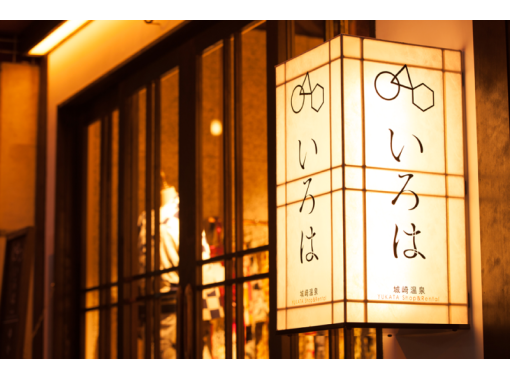

![[Hyogo, Aioi] Experience making a small knife and observe the making of a Japanese sword (forging)の画像](https://img.activityjapan.com/10/57224/10000005722401_ntZ3nnUe_3.jpg?version=1744950484)
![[Hyogo, Minami Awaji] 400 years of history! Japan's three major tile production areas: Onigawara craftsmen on Awaji Island: Experience the craftsmanship of Onishi up close and see the manufacturing process! Awaji tile kiln tour experienceの画像](https://img.activityjapan.com/10/58514/10000005851401_1Gz5AIDf_3.webp?version=1743490147)
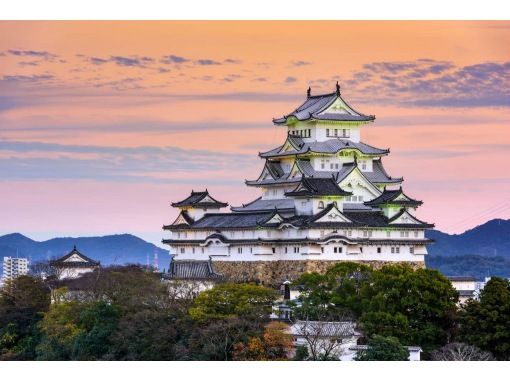
![[Hyogo, Minami Awaji] Experience Zen meditation and appreciating the Nanga paintings of Gyokusei Jikihara at a Zen temple associated with the master of Nanga painting who grew up on Awaji Island.の画像](https://img.activityjapan.com/10/58500/10000005850001_1Gz5AIDf_3.webp?version=1743403386)
![[Hyogo, Minami Awaji] Limited to one group (1-3 people) per day! Guided by an active puppeteer of Awaji Puppet Theater! A 3-hour tour in a chartered taxi around the areas associated with the showの画像](https://img.activityjapan.com/10/58663/10000005866301_1Gz5AIDf_3.webp?version=1744343049)
![[Hyogo, Minami Awaji] Limited to one group (1-3 people) per day! A one-day course where you can enjoy Awaji Ningyo Joruri, guided by a current member of the troupe! A tour of Ebisu Shrine in a chartered taxiの画像](https://img.activityjapan.com/10/58662/10000005866201_1Gz5AIDf_3.webp?version=1744342502)
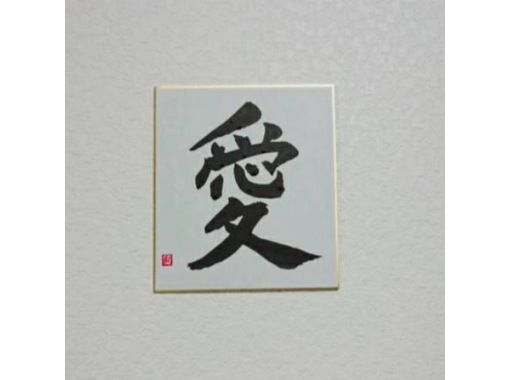
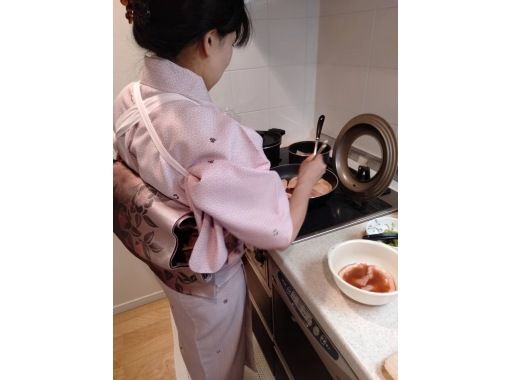
![[Hyogo Prefecture, Itami] Wearing authentic kimono, home cooking experience & tea ceremony-You can choose your favorite kimono!の画像](https://img.activityjapan.com/10/30555/10000003055501_45q1HsdU_3.jpg?version=1668996841)
![[Hyogo, Tamba] Experience 850 years of craftsmanship! Tamba ware pottery experienceの画像](https://img.activityjapan.com/10/53750/10000005375001_lpXgdgDW_3.webp?version=1712889971)
![[Hyogo/ Amagasaki City] A pottery class “3rd course” where you can enjoy the charm of pottery from soil selection to Sakake 5 minutes on foot from Hankyu Tsukaguchi Station!の画像](https://img.activityjapan.com/10/12359/10000001235901_9BWFftlQ_3.jpg?version=1571893912)
![[Hyogo, Minami Awaji] Experience roasting coffee beans at a traditional Japanese cafe, grind freshly roasted beans and sample "specialty coffee" and enjoy your own timeの画像](https://img.activityjapan.com/10/58498/10000005849801_1Gz5AIDf_3.png?version=1743402664)
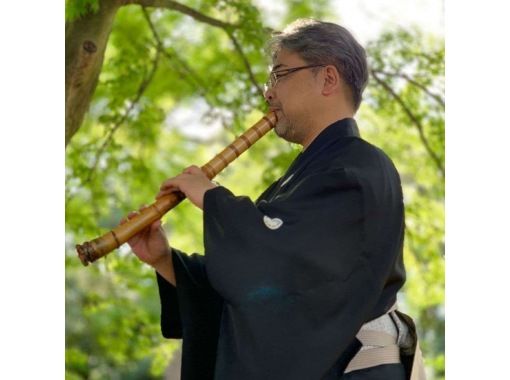
![[Hyogo, Aioi] Experience making a small steel sword and observe the making of a Japanese sword (forging)の画像](https://img.activityjapan.com/10/57225/10000005722501_tUytNN5L_3.JPG?version=1744950544)
![[Hyogo/Takarazuka] A 1-2 hour walking tour of "Kojin-san" with a guide! Kiyoshikojin Seichoji Temple! One person is welcome * With a dedicated guide who is familiar with the local areaの画像](https://img.activityjapan.com/10/44112/10000004411201_5u86vXcx_3.jpg?version=1662950707)
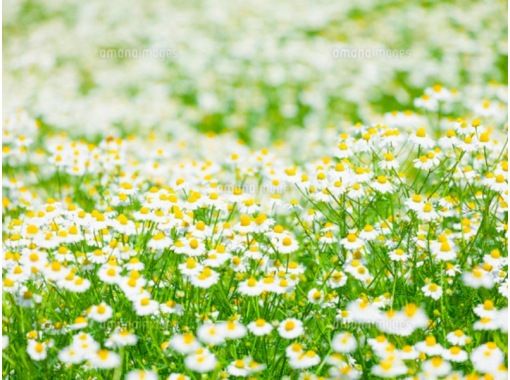
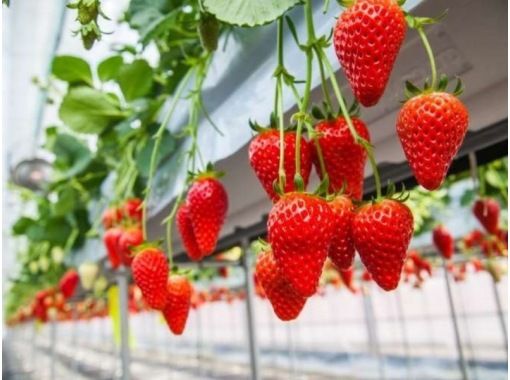
![[Hyogo, Awajishima] Learn from the masters of incense making and experience creating Japanese fragrancesの画像](https://img.activityjapan.com/10/57644/10000005764401_shBc59Sl_3.jpg?version=1738553603)
![[Hyogo/Takarazuka] A 2-hour walking tour to discover new things in Takarazuka! Also introduced in Bra Tamori! Parents and children and one person are also welcome *Guide includedの画像](https://img.activityjapan.com/10/44053/10000004405301_5u86vXcx_3.png?version=1681196347)
![[Hyogo Prefecture Awaji Island] Experience formal worship at Japan's oldest shrine "Izanagi Jingu" Spend a special time sharpening your sensesの画像](https://img.activityjapan.com/10/46911/10000004691101_AHkjA21Z_3.JPG?version=1678360622)
![[Hyogo Prefecture, Awaji Island] Walk the legendary "Eshima" and the Showa retro fishing port town "Iwaya"の画像](https://img.activityjapan.com/10/46866/10000004686601_atFOJjl6_3.jpg?version=1681448582)
![[Hyogo / Himeji] Near Himeji Castle! Vegetables and soup stock while sightseeing! "Temari Sushi ○ Tempura" is also available for vegetarians!の画像](https://img.activityjapan.com/10/26546/10000002654601_Uh3zHSy3_3.JPG?version=1618119874)
![[Hyogo, Minami Awaji] Fresh onions and milk ice cream tasting included! Learn the secrets of onion production using the traditional "recycling agriculture" system with this agricultural heritage tour and onion harvesting experienceの画像](https://img.activityjapan.com/10/58637/10000005863701_1Gz5AIDf_3.png?version=1744251663)
![[Hyogo, Minami Awaji] Agricultural heritage tour to learn the secrets of onion production by "recycling agriculture" with fresh onions, onion chiffon cake, and milk ice cream tasting & onion harvesting experienceの画像](https://img.activityjapan.com/10/58613/10000005861301_1Gz5AIDf_3.png?version=1744251422)